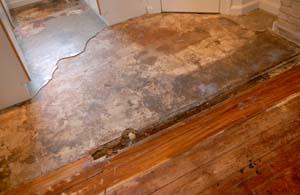Do's & Don'ts of Water Restoration.
Do's & Don'ts of Water Restoration.
Blog Article
In this article below you can locate a lot of superb additional info all about Reducing Your Risk Of Water And Fire Damage At Home.

Water provides life, yet water breach on some components where it's not supposed to be can result in damages and also trouble. In enhancement, houses with water damages smell musty and also old.
Water can originate from lots of sources like tropical storms, floodings, ruptured pipes, leakages, as well as sewage system problems. It's much better to have a functioning knowledge of security precautions if you have water damage. Right here are a couple of standards on how to handle water damages.
Do Prioritize Residence Insurance Coverage Insurance Coverage
Seasonal water damages can originate from floodings, seasonal rainfalls, and also wind. There is additionally an incident of an unexpected flood, whether it originated from a damaged pipeline that all of a sudden bursts right into your house. To shield your residence, get house insurance policy that covers both acts of God such as natural calamities, and also emergencies like damaged plumbing.
Don't Neglect to Shut Off Utilities
When catastrophe strikes as well as you remain in a flood-prone location, turn off the primary electric circuit. Shutting off the power protects against
electrical shocks when water can be found in as water serves as a conductor. Don't fail to remember to shut off the primary water line valve as a method to avoid more damage.
If the floodwaters are obtaining high, maintain your furnishings steady as they can move as well as cause additional damages.
Do Remain Proactive as well as Heed Weather Notifies
Storm floodings can be extremely unpredictable. Stay prepared and also proactive at all times if you live in an area afflicted by floodings. Listen to the news and also evacuation cautions if you live near a body of water like a creek, lake, or river . Obtain your belongings and also vital records from the first stage and cellar, after that put them in a refuge and also the highest possible level.
Don't Overlook the Roofing System
Your roofer needs to take care of the malfunctioning seamless gutters or any kind of various other indications of damages or weakening. An inspection will certainly avoid water from moving down your walls and saturating your ceiling.
Do Take Note Of Tiny Leaks
There are red flags that can draw your focus as well as show to you some weakened pipelines in your house. Signs of red flags in your pipes include gurgling paint, peeling wallpaper, water touches, water spots, or dripping sounds behind the walls. Repair work and also inspect your plumbing repaired before it results in substantial damage to your residence, funds, and also an individual headache.
Do Not Panic in Case of a Burst Pipeline
Timing is essential when it comes to water damage. If a pipeline bursts in your home, immediately shut off your main water valve to reduce off the resource and avoid more damage. Call a reliable water damage remediation expert for help.
Water gives life, but water invasion on some components where it's not meant to be can result in damage and also aggravation. In enhancement, homes with water damage scent old and stuffy.
Seasonal water damage can come from floodings, seasonal rains, as well as wind. Signs of red flags in your pipes include bubbling paint, peeling wallpaper, water touches, water spots, or leaking audios behind the wall surfaces. If a pipeline ruptureds in your residence, instantly closed off your primary water shutoff to cut off the source as well as stop more damages.
Some Do's & Don't When Dealing with a Water Damage
DO:
Make sure the water source has been eliminated. Contact a plumber if needed. Turn off circuit breakers supplying electricity to wet areas and unplug any electronics that are on wet carpet or surfaces Remove small furniture items Remove as much excess water as possible by mopping or blotting; Use WHITE towels to blot wet carpeting Wipe water from wooden furniture after removing anything on it Remove and prop up wet upholstery cushions for even drying (check for any bleeding) Pin up curtains or furniture skirts if needed Place aluminum foil, saucers or wood blocks between furniture legs and wet carpet Turn on air conditioning for maximum drying in winter and open windows in the summer Open any drawers and cabinets affected for complete drying but do not force them open Remove any valuable art objects or paintings to a safe, dry place Open any suitcases or luggage that may have been affected to dry, preferably in sunlight Hang any fur or leather goods to dry at room temperature Punch small holes in sagging ceilings to relieve trapped water (don't forget to place pans beneath!); however, if the ceiling is sagging extremely low, stay out of the room and we'll take care of it DO NOT:
Leave wet fabrics in place; dry them as soon as possible Leave books, magazines or any other colored items on wet carpets or floor Use your household vacuum to remove water Use TV's or other electronics/appliances while standing on wet carpets or floors; especially not on wet concrete floors Turn on ceiling fixtures if the ceiling is wet Turn your heat up, unless instructed otherwise

Hopefully you enjoyed our post on 5 Home Safety Tips To Reduce The Risk Of Fire And Water Damage. Thanks so much for taking time to read our article post. Sharing is caring. One never knows, you will be doing someone a favor. We cherish reading our article about Fire And Water Damage Prevention.
Report this page